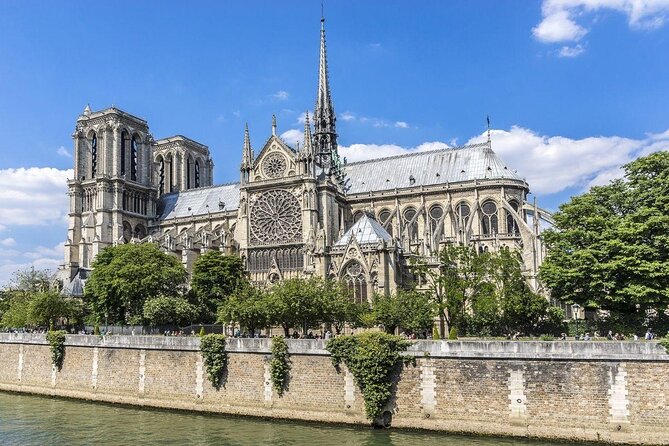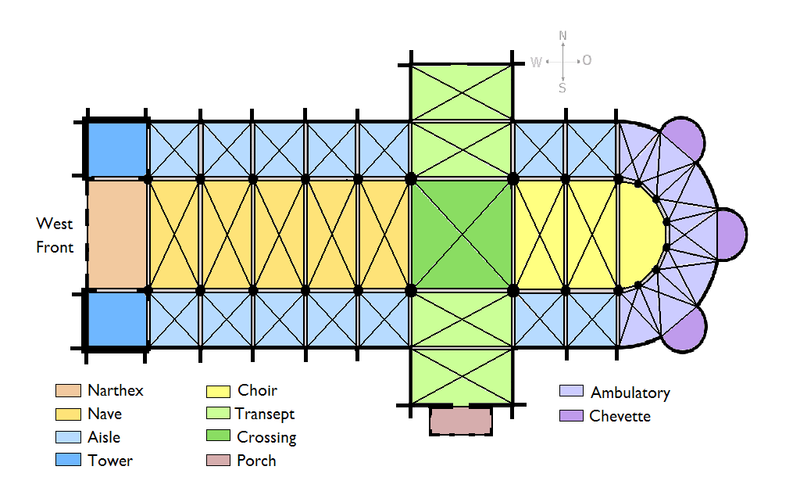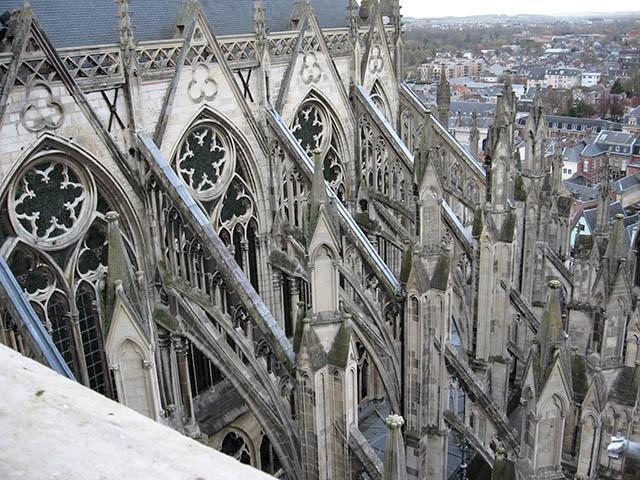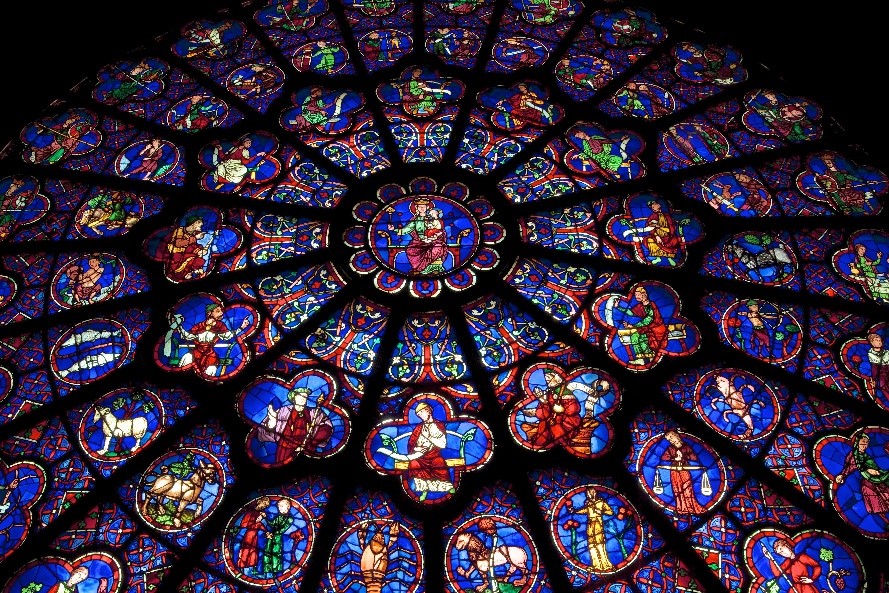Gothic Cathedrals
Notre Dame Cathedral in Paris France is the most notable example of Gothic Architecture

The Context
The name Gothic came from intellectual’s initial thought of dark completion of these buildings. Gothic architecture was essentially a continuation of Romanesque architecture and flourished for many of the same reasons.
This is the layout of typical Gothic Architecture

The Structure
Gothic architecture got rid of the thick, heavy walls, and rounded arches associated with Romanesque architecture by using flying buttresses and ribbed vaulting to get rid of the bulkiness of the building, allowing thinner and taller walls to be constructed. Gothic churches could achieve new heights with a lightness and a gracefulness often absent from sturdy Romanesque structures. Some of the key architectural components integral to the Gothic form are pointed arches, flying buttresses, tri-portal west façades, rib vaults, and of course, rose windows.
Gothic architecture had two new characteristics in comparison with the Romanesque, a soaring upward movement and luminosity. Due to vaults with pointed arches supported by robust pillars, it was possible to increase their height considerably. By employing the new technical solutions, it was possible to make openings in the outer walls for stained-glass windows. The windows became great luminous images, very suitable for instructing the people in faith. Oftentimes the life of a saint, a parable or some other biblical event were recounted.
The flying buttress was one of the many innovations that made Gothic architecture possible.

Relation to the Church
Gothic cathedrals show a synthesis of faith and art harmoniously expressed in the fascinating universal beauty which people still visit today. The upward thrust was intended as an invitation to prayer and at the same time was itself a prayer. The Gothic cathedral intended to express in its architectural lines the soul's longing for God. Light pouring through the stained-glass to worshipers was meant to tell them the story of salvation and to involve them in this story.
The inner architecture of Early Chrisitan Basilicas sought to direct attention towards the altar as the centeral place of sacrifice.

Modern Application
Besides serving many of the same purposes as Romanesque cathedrals, these Gothic Cathedrals can be seen as a representation of the continued growth of the Catholic church, soaring to new heights as time goes on. These great pieces of art are also a testament to the longevity of the church itself. The cathedral’s symbolic structure portraying the longing for God continues to show us how our souls long for God today. Overall, these structures are still visitable today and are a beautiful and revealing piece of Church History.